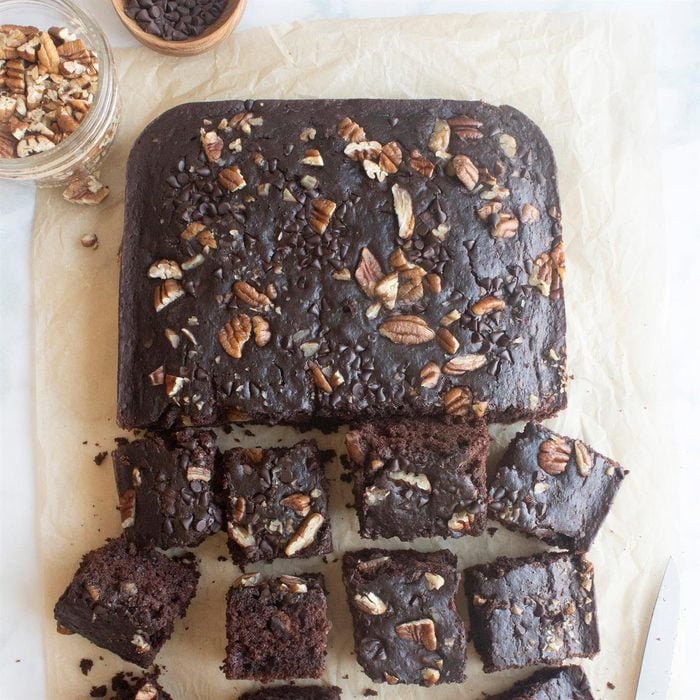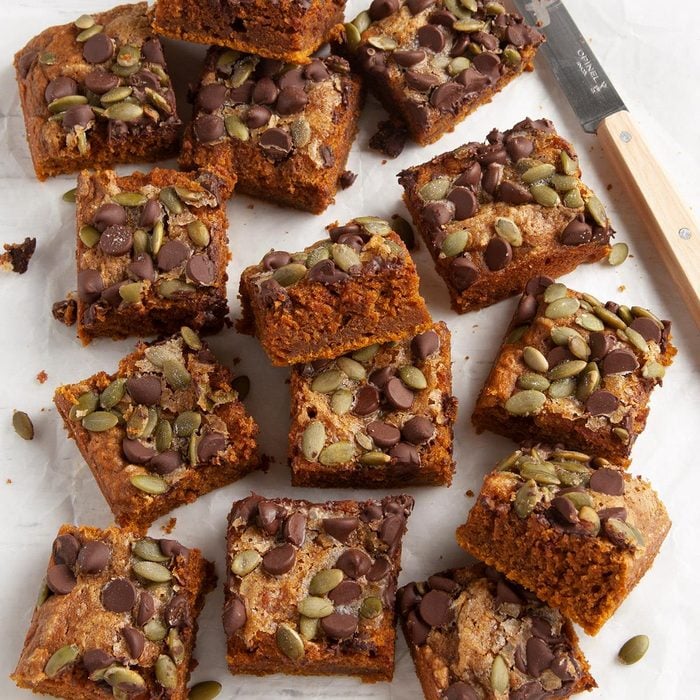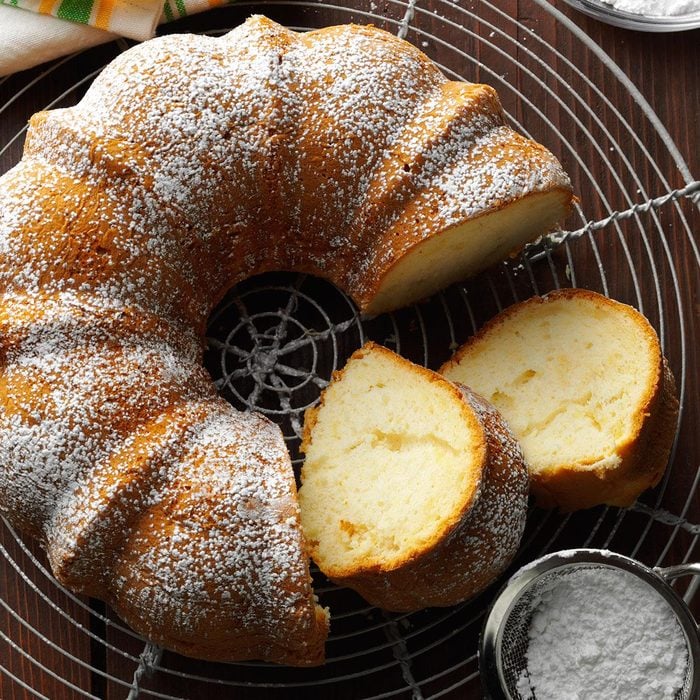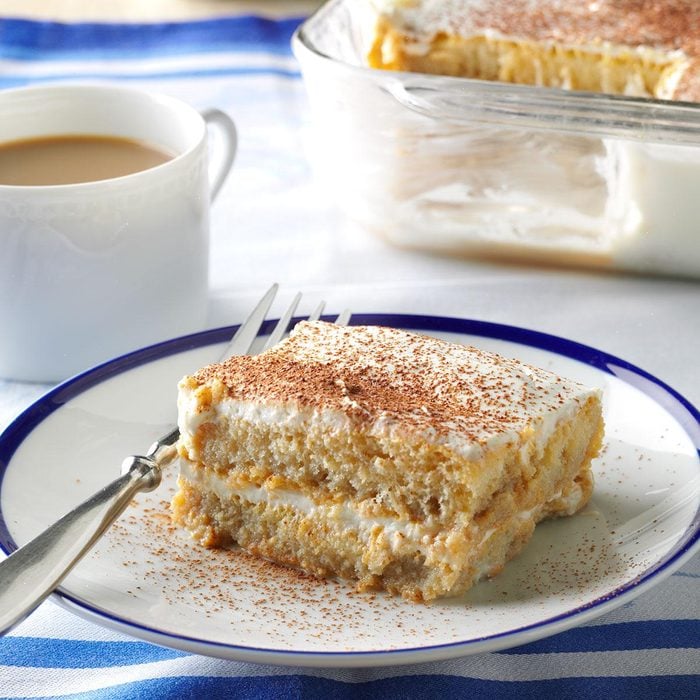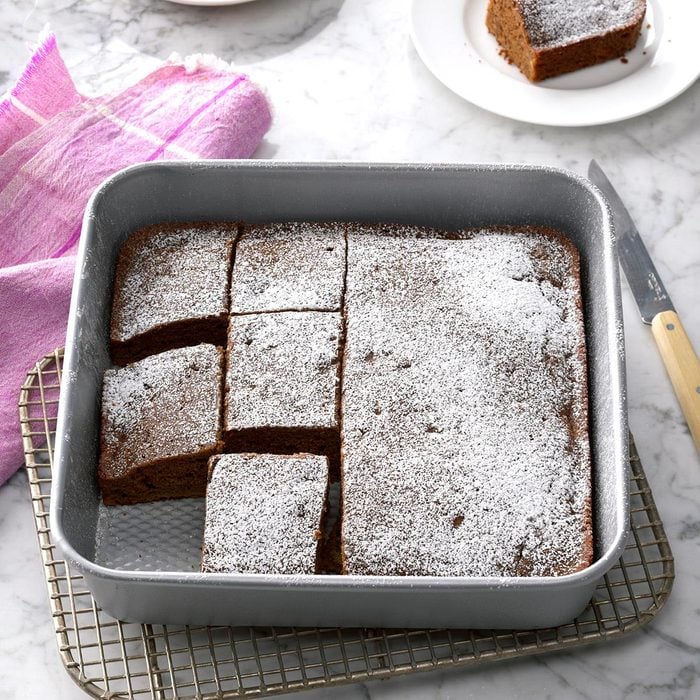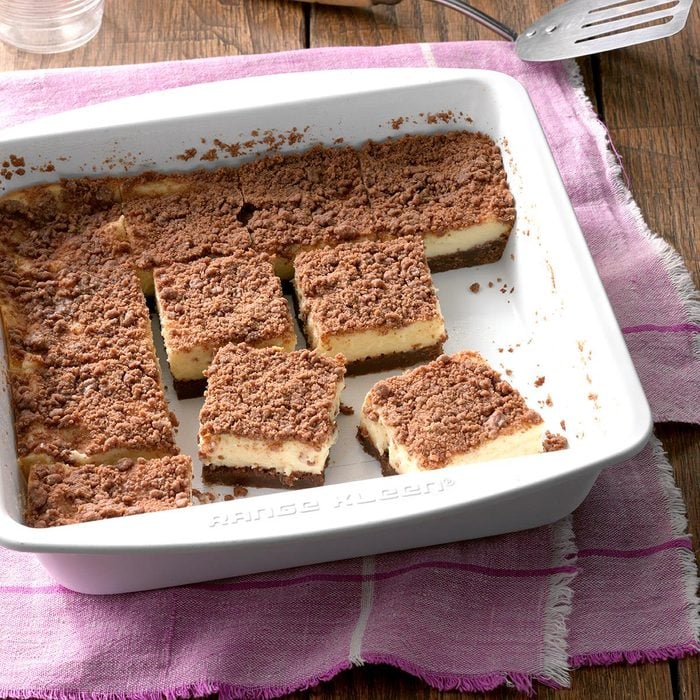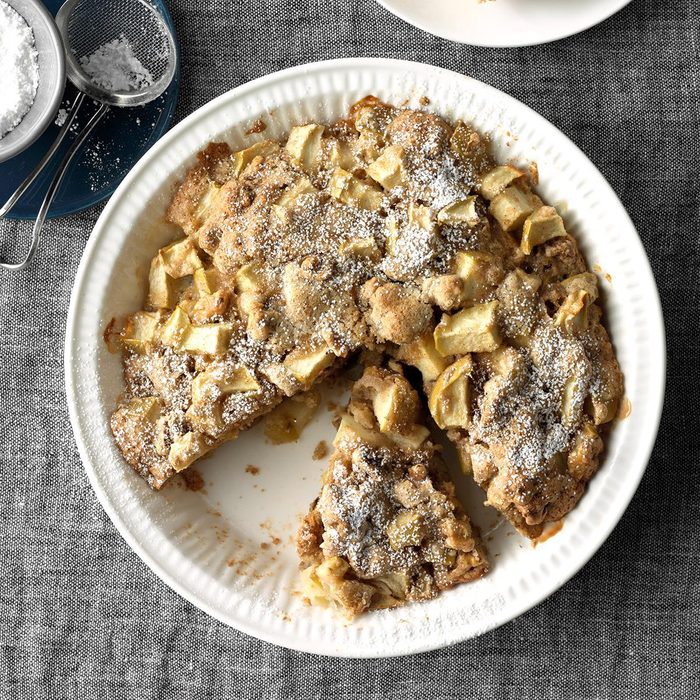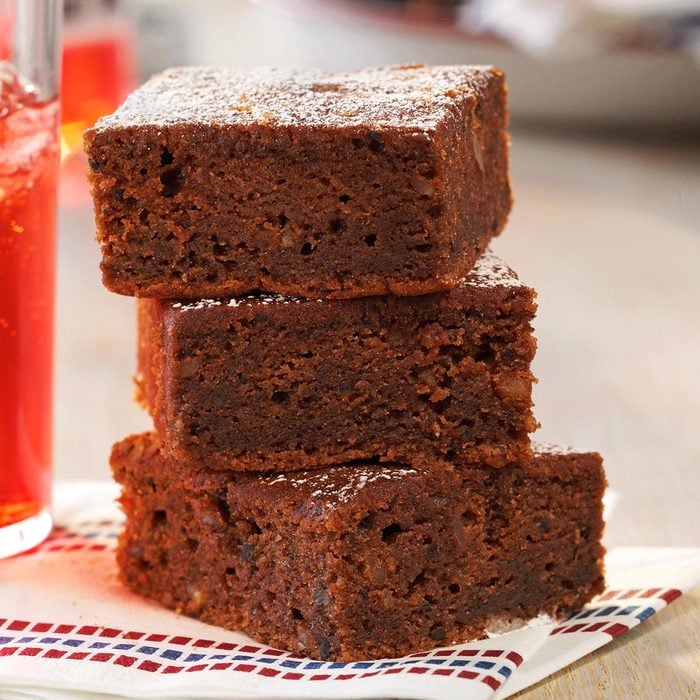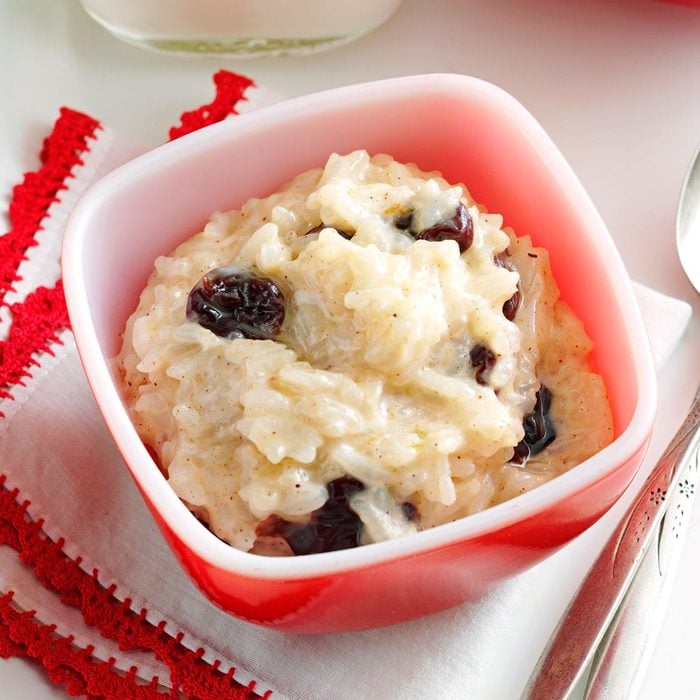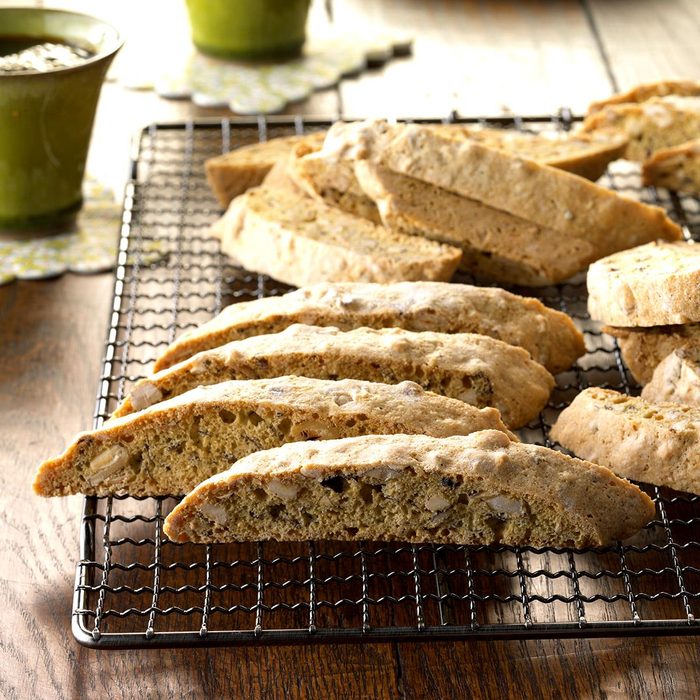 Best Angel Food Cake
Best Angel Food Cake
For our daughter's wedding, a friend made this lovely, angel food cake from a recipe she's used for decades. It really is one of the best angel food cake recipes I've found. Serve slices plain or dress them up with fresh fruit. —Marilyn Niemeyer, Doon, Iowa
Go to Recipe
Want more diabetic-friendly recipes? Sign up for our free newsletter,
Balanced Plate: Thriving with Diabetes.
Sugar-Free Chocolate FudgeI'm borderline diabetic, but this sugar-free fudge made with sugar substitute appeases my sweet tooth. —Kaye Hartley, Jacksonville, Florida
Devil’s Food Snack CakeMy husband and his friends request this devil's food snack cake for camping trips because it’s easy to transport. That makes it great for taking to potlucks and other events, too, as there's no frosting involved. —Julie Danler, Bel Aire, Kansas
Pumpkin Snack CakeThe crunchy, sweet topping makes this simple pumpkin snack cake taste extra special. If you prefer a sweeter cake, omit the topping and spread with your favorite frosting instead. —Steven Schend, Grand Rapids, Michigan
Soft Honey CookiesThese old-fashioned honey cookies have a subtle honey-cinnamon flavor and a tender texture. This recipe has been a favorite in my family for years and now it can be one at your house, too. —Rochelle Friedman, Brooklyn, New York
Air-Fryer Apple FrittersAn air fryer makes these easy apple fritters healthier than old-fashioned fritters, yet they are still just as delicious. They're a quick and easy dessert that includes a scrumptious brown butter glaze! —Alyssa Castriotta, North Scituate, Rhode Island
Ginger Plum TartSweet cravings, begone: This free-form plum tart is done in only 35 minutes. It's extra awesome when served warm. —Taste of Home Test Kitchen
Cream Cheese Swirl BrowniesI'm a chocolate lover, and these cream cheese brownies have satisfied my cravings many times. No one guesses the brownies are light because their chewy texture and rich chocolate taste can't be beat. My family requests them often, and I'm happy to oblige. —Heidi Johnson, Worland, Wyoming
Raspberry-Banana Soft ServeWhen I make this ice cream, I mix and match
bananas for their ripeness. Very ripe ones add more banana flavor. Less ripe ones have a fluffier texture. —Melissa Hansen, Milwaukee, Wisconsin
Can't get enough of these low-sugar treats? Check out our
recipes for easy diabetic desserts.
Pear Bundt CakeNext time you make cake from a mix, try my easy and delicious recipe. The pears and syrup add sweet flavor and prevent the cake from drying out. And since there's no oil added to the batter, this tender fall-perfect cake is surprisingly low in fat. —Veronica Ross, Columbia Heights, Minnesota
Berries with Vanilla CustardWhat a simple, delectable way to enjoy fresh raspberries. For a change, also try the custard with strawberries or peaches. —Sarah C. Vasques, Milford, New Hampshire
Strawberry Banana PuddingI add in additional fruit to get a little closer to all those servings you need every day. You can also try using different flavored puddings and fruit to switch up the recipe. —Jackie Termont, Richmond, Virginia
Upside-Down Blood Orange CupcakesMaking blood orange cupcakes is my favorite way to use fresh blood oranges. I start with a cake mix and bump up the flavor with essential oil. No one knows these cupcakes are not from scratch. —Monica Chadha, Fremont, California
Must-Have TiramisuThis is the perfect guilt-free version of a classic dessert. My friends even say that they prefer my lighter recipe over other tiramisu.—Ale Gambini, Beverly Hills, California
Pumpkin-Butterscotch Gingerbread TrifleThere's more to pumpkin than pie, as this impressive trifle proves. It looks so elegant with alternating layers of gingerbread cake and pumpkin/butterscotch pudding. Try making it ahead of time for a fuss-free dessert when you're planning to entertain guests. —Lyla Lehenbauer, New London, Missouri
Chocolate and Raspberry CheesecakeYou’ll fall in love with this sweet treat. Each silky slice is topped with juicy raspberries. Yes, you can have cheesecake without breaking the calorie budget. —Taste of Home Test Kitchen
Chocolate-Coconut Angel CupcakesMy guests are never satisfied with just one of these, but that's OK because they are so light. The meringue-like tops make them different, and the chocolate and coconut make them memorable. —Bernice Janowski, Stevens Point, Wisconsin
Pear TartThis lovely pear tart features warm fall spices and delicious fruit, plus a lightly sweetened cream cheese filling and a nutty, buttery crust.
No-Bake Apple PieWe always have an abundance of apples in the fall, so I like to make this easy pie. My husband has diabetes, and this recipe fits into his diet ... but everyone enjoys it. —Shirley Vredenburg, Ossineke, Michigan
Chili-Lime Grilled PineappleI love grilled pineapple. This recipe combines the fruit's natural sweetness with the tart and spicy flavors of lime and chili powder. It's great for dessert and even as a side dish with ham or pork chops. —Geraldine Saucier, Albuquerque, New Mexico
Frozen Berry & Yogurt SwirlsI enjoy these frozen yogurt pops because they double as a healthy snack and a cool, creamy sweet treat. —Colleen Ludovice, Wauwatosa, Wisconsin
Molasses Crinkle CookiesIf you love desserts with warm and comforting spices, try these molasses crinkle cookies. They’re crispy on the outside, chewy in the center and packed with irresistible flavors.
Orange Ricotta Cake RollI come from a big Italian family. When I was growing up, my mom cooked and baked many delicious meals and desserts from scratch. Now I do the same for my family. This cake is my finale to our special-occasion dinners. —Cathy Banks, Encinitas, California
Root Beer Float PieThis is the kind of recipe your kids will look back on and always remember. And you don't even need to use an oven! —Cindy Reams, Philipsburg, Pennsylvania
Peppermint Meringue CookiesThese peppermint meringue cookies sing of Christmas cheer with their festive flavor and snowy hue. With just five ingredients and four simple steps, you’re on your way to Christmas cookies that you’ll look forward to every year.
Ribbon Pudding PieCool, smooth and creamy, this pretty pie is a slice of heaven for people with diabetes and anyone who likes an easy yet impressive dessert. The lovely pudding layers feature a yummy combination of vanilla, chocolate and butterscotch. —Doris Morgan, Verona, Mississippi
Chocolate Macaroon CupcakesA delightful coconut and ricotta cheese filling is hidden inside these chocolate cupcakes. —Dolores Skrout, Summerhill, Pennsylvania
Marinated OrangesThis flavorful fruit was actually the topping in a cake recipe. But I didn't want all the calories or fat from the cake—and the oranges are a good dessert all by themselves! The dash of vanilla extract brings out the fruit's sweetness. —Carol Poindexter, Norridge, Illinois
Chocolate Hazelnut Soy PopsI love Nutella, and I'm always looking for ways to use it. These pops are a great way to stay cool in the summer, but also make a cozy treat in the winter. —Bonita Suter, Lawrence, Michigan
Banana Chocolate CakeThis light-as-air chocolate cake has a yummy banana flavor. It’s scrumptious as is, but you can also dress it up with nuts or light frostings. —Tina Bellows, Racine, Wisconsin
Sour Cream BavarianAre you ‘sweet on’ someone who’s counting calories? Show them you care with this light and refreshing dessert. It’s sinfully creamy and so pretty with the tart raspberry sauce. No one would ever guess that it’s fat-free! —Judi Janczewski, Berwyn, Illinois
Chocolate Swirled CheesecakeThis cheesecake looks and tastes indulgent, but it's a lightened up version you can feel good about serving your family. —Kathy Shan, Toledo, Ohio
Strawberry Sorbet SensationOn hot days in Colorado, we chill out with slices of this berries-and-cream dessert. The layered effect is so much fun. Use any flavor of sorbet you like. —Kendra Doss, Colorado Springs, Colorado
Banana Chocolate Chip CookiesThese warm, gooey, indulgent banana chocolate chip cookies can be made in just 35 minutes. Bake a batch of three dozen to nosh on all week long.
Makeover Cream Cheese Streusel BarsWith an oh-so-chocolaty crust, a crispy, crunchy topping and soft cream cheese filling, these delectable bars are over-the-top indulgent. —Janet Coops, Duarte, California
Chocolate-Topped Strawberry CheesecakeCreamy and airy, this gorgeous dessert is the perfect special something for a summer dinner party. I love the mix of smooth strawberry cheesecake and crumbly chocolate crust—and how elegant it looks on the table. —Kathy Berger, Dry Ridge, Kentucky
Pumpkin Pie CustardInstead of pumpkin pie, try this flavorful light holiday dessert. My husband’s aunt shared the recipe after she brought this treat to a family party. —Nancy Zimmerman, Cape May Court House, New Jersey
No-Bake Peanut Butter TreatsPerfect for road trips, these peanut butter oatmeal balls won’t stick to your hands. Keep them in the refrigerator for portable snacks. —Sonia Rohda, Waverly, Nebraska
Fluffy Key Lime PieFor a taste of paradise, try this no-bake Key lime pie recipe. It's low in fat, sugar and fuss. It truly is the best Key lime pie recipe ever! —Frances VanFossan, Warren, Michigan
Cranberry Stuffed ApplesCinnamon, nutmeg and walnuts add a homey autumn flavor to these stuffed apples, while the slow cooker does most of the work. —Graciela Sandvigen, Rochester, New York
Carrot Cookie BitesThis recipe is a longtime family favorite. The cookies are soft and delicious, and the aroma while baking is absolutely irresistible! I'm always being asked for the recipe. —Jeanie Petrik, Greensburg, Kentucky
Lemon-Apricot Fruit PopsWith just 31 calories, 4 teaspoons of sugar total and lots of vitamin C, this is one light and refreshing summer dessert everyone can find room for! —Aysha Schurman, Ammon, Idaho
Orange Dream Angel Food CakeA basic angel food cake becomes a heavenly indulgence, thanks to a hint of orange flavor swirled into every bite. The orange color makes slices of the cake look so pretty when arranged on individual dessert plates.—Lauren Osborne, Holtwood, Pennsylvania
Meringue CookiesThese sweet little swirls are light as can be. They're all you need after a big, special dinner. —Jenni Sharp, Milwaukee, Wisconsin
Mixed Berry Sundaes for 2These delightful yogurt sundaes are an easy way to add fruit and calcium to your diet. Berries star in the dish, which I enjoy as a simple breakfast or healthy dessert for two. —Edie DeSpain, Logan, Utah
Swedish Apple PieThis decadent Swedish apple pie serves up homemade flavor in every bite. This is a perfect snack with coffee or as an after-dinner treat. —Sarah Klier, Grand Rapids, Michigan
Strawberry-Rhubarb Ice PopsThese cool, creamy pops are a deliciously different way to use up the bounty from your rhubarb patch. —Donna Linihan, Moncton, New Brunswick
Super Spud BrowniesThese moist and cakelike brownies came from my mom’s old cookbook. Mashed potatoes may seem like an unusual ingredient, but they work beautifully—this recipe took first place at a local festival. —Marlene Gerer, Denton, Montana
Layered Pumpkin Cheesecake BarsEnjoy this holiday dessert without worrying about calories. Plus it is so luscious that no one will guess that it is light! —Jean Ecos, Hartland, Wisconsin
Patriotic PopsMy kids love homemade ice pops, and I love knowing that the ones we make are good for them. We whip up a big batch with multiple flavors so they have many choices, but these patriotic red, white and blueberry ones are always a favorite! —Shannon Carino, Frisco, Texas
Chunky Banana Cream FreezeEveryone loves ice cream, but we all know it doesn't make a great after-school snack. Until this! With its sweet banana-almond flavor and chunky texture, this appealing banana peanut butter "ice cream" is a crowd-pleaser. People who ask me for the recipe can't believe how easy it is to make. —Kristen Bloom, Okinawa, Japan
Chocolate Angel Cupcakes with Coconut Cream FrostingSweeten any meal with these fun, frosted chocolate cupcakes that take just minutes to make. The finger-licking flavor packs far fewer calories and fat than traditional desserts! —Mandy Rivers, Lexington, South Carolina
Banana SouffleThis pretty, golden-topped puff is so easy to whip up, but looks like you really fussed. Lightly laced with rum, the moist, tender, banana-rich souffle makes that perfect “little something” to wrap up any holiday dinner. —Crystal Jo Bruns, Iliff, Colorado
Eggnog MousseGuests will always find room for this light, fluffy, mouthwatering mousse. It makes an elegant, refreshing finish for heavier meals—and it’s also a great way to use up any extra eggnog in the fridge. —Taste of Home Test Kitchen
Light & Easy Cheesecake BarsFresh hints of lemon in the tender crust and creamy filling of these berry-topped treats. —Patricia Nieh, Portola Valley, California
Lemon-Berry ShortcakeThis simple lemon shortcake is tender and not overly sweet. Enjoy this summertime classic with a generous layer of whipped topping and berries. —Meryl Herr, Overland Park, Kansas
Berry White Ice PopsNothing says summer like an ice pop. Kids and adults alike love this fruit-filled version. —Sharon Guinta, Stamford, Connecticut
Chocolate-Hazelnut Banana CrepesHere is a simple and delicious treat featuring a thin, tender crepe stuffed with a creamy chocolate-hazelnut spread and bananas lightly sauteed in brown sugar and butter. It tastes elegant but takes so little effort. —Cathy Hall, Lyndhurst, Virginia
Double-Nut Stuffed FigsWe have a family member that has diabetes, so dessert can get tricky. These sweet, nutritious stuffed figs keep us all happy. —Bob Bailey, Columbus, Ohio
Black Bean BrowniesBlack bean brownies are naturally high in protein and fiber, but this recipe ensures chocolaty goodness too. If you're avoiding dairy and gluten, give these a try, but be warned: It's nearly impossible to eat just one.
Strawberry-Citrus Freezer PopsI knew that clementines and strawberries would create a luscious combination in a fruit pop, and I have to say these are delicious! —Colleen Ludovice, Milwaukee, Wisconsin
Easy Lemon Berry TartletsThese fruity, flaky tartlets filled with raspberries and topped with lemon-tinged cream cheese are a sweet ending to any weeknight meal. They are elegant yet come together quickly and easily. —Elizabeth Dehart, West Jordan, Utah
Star-Spangled ParfaitsThe best time for this dessert is midsummer, when the blueberries are thick in our northern woods. Red raspberries can be added to the mixed berries, too, to brighten the patriotic colors. —Anne Theriault, Wellesley, Massachusetts
Cherry & Spice Rice PuddingI live in Traverse City, the Cherry Capital of the World. What better way to celebrate our wonderful orchards than by using plump, tart dried cherries in my favorite desserts? This slow-cooked rice pudding recipe always turns out wonderful. —Deb Perry, Traverse City, Michigan
Grilled Stone Fruits with Balsamic SyrupGet ready to experience another side of stone fruits. Hot off the rack, these grilled nectarines practically melt in your mouth. —Sonya Labbe, West Hollywood, California
Cinnamon Nut BarsClassic bar meets good-for-you ingredients in this updated recipe. If you have the patience, after the bars are cool, store them in a tin for a day to allow the flavors to meld...I think they taste even better the next day.— Heidi Lindsey, Prairie du Sac, Wisconsin
Strawberry-Rosemary Yogurt PopsWe planted strawberries a few years ago and these tangy-sweet frozen yogurt pops are my very favorite treats to make with them! The options are endless. Try using other yogurt flavors like lemon, raspberry or blueberry. —Carmell Childs, Orangeville, Utah
Chocolate-Dipped Strawberry Meringue RosesEat these pretty treats as is or crush them into a bowl of strawberries and whipped cream. Readers of my blog, utry.it, went nuts when I posted that idea.—Amy Tong, Anaheim, California
Frozen Pineapple-Kiwi PopsKiwi, pineapple, sugar and water are all you need to make these easy, breezy freezer pops.—Colleen Ludovice, Milwaukee, Wisconsin
Baked Elephant EarsMy mother-in-law handed down this recipe from her mother. These are a special treat—even better, I think, than those at a carnival or festival. —Delores Baeten, Downers Grove, Illinois
Frozen Chocolate Monkey TreatsEveryone needs a fun, friendly way for kids to play with food. These rich bites are nutty and yummy. Just coat bananas in chocolate and dip them into peanuts, sprinkles or coconut. —Susan Hein, Burlington, Wisconsin
Chunky Apple Snack CakeWe enjoy this cake as a snack, packed in lunches or as a scrumptious dessert when warmed and topped with a scoop of low-fat ice cream. If the batter seems really thick, don't worry: Once you stir in the apples it loosens up. —Cindy Beberman, Orland Park, Illinois
Lemony Cream Cheese BarsAnytime I can take a recipe that has been handed down two generations and lighten it up while keeping the delicious flavor memories intact, I’m a happy girl. —Patti Lavell, Islamorada, Florida
Frozen Banana Cereal PopsWhen we want a healthy snack, we dip bananas in yogurt, roll 'em in cereal, then freeze. Ta-da! —Scarlett Elrod, Newnan, Georgia
Hazelnut Almond BiscottiPour a cup of coffee and indulge! Crisp, crunchy biscotti cookies are perfect for dunking. Hazelnuts and almonds make my favorite version even better. —Johnna Johnson, Scottsdale, Arizona
Banana-Pineapple Cream PiesMy mother gave me this simple and delicious recipe years ago. The recipe makes two pies, so it's perfect for a potluck. I've never met anyone who didn't like it! —Robyn Appenzeller, Portsmouth, Virginia
Makeover Lemon Pound CakeFor this lovely golden cake, I use fat-free yogurt to trim the calories. It's a comforting dessert for days when it's warm enough to dine outside. —Lauren Gilmore, Pennington, New Jersey
Fruit & Almond BitesWith big handfuls of dried apricots and cherries, almonds and pistachios, we make dozens of no-bake treats you can take anywhere. —Donna Pochoday-Stelmach, Morristown, New Jersey
Also check out these diabetes-friendly desserts you can buy on Amazon.
Rosemary & Thyme Lemon Pudding CakesThese simple little cakes are absolutely divine and are perfect with hot tea. Think English tea party! Your guests will love them. — Crystal Jo Bruns, Iliff, Colorado
Pineapple Upside-Down Muffin CakesA friend submitted this recipe to a cookbook our school district was compiling. The first time I made the cakes, my whole family declared the recipe a winner. Delicious and healthy to boot, they remain a favorite to this day. —Joan Hallford, North Richland Hills, Texas
Sunrise PopsBright, beautiful, cool, refreshing, sweet, delicious and wholesome—what's there not to like in these homemade pops?—Colleen Ludovice, Wauwatosa, Wisconsin
























